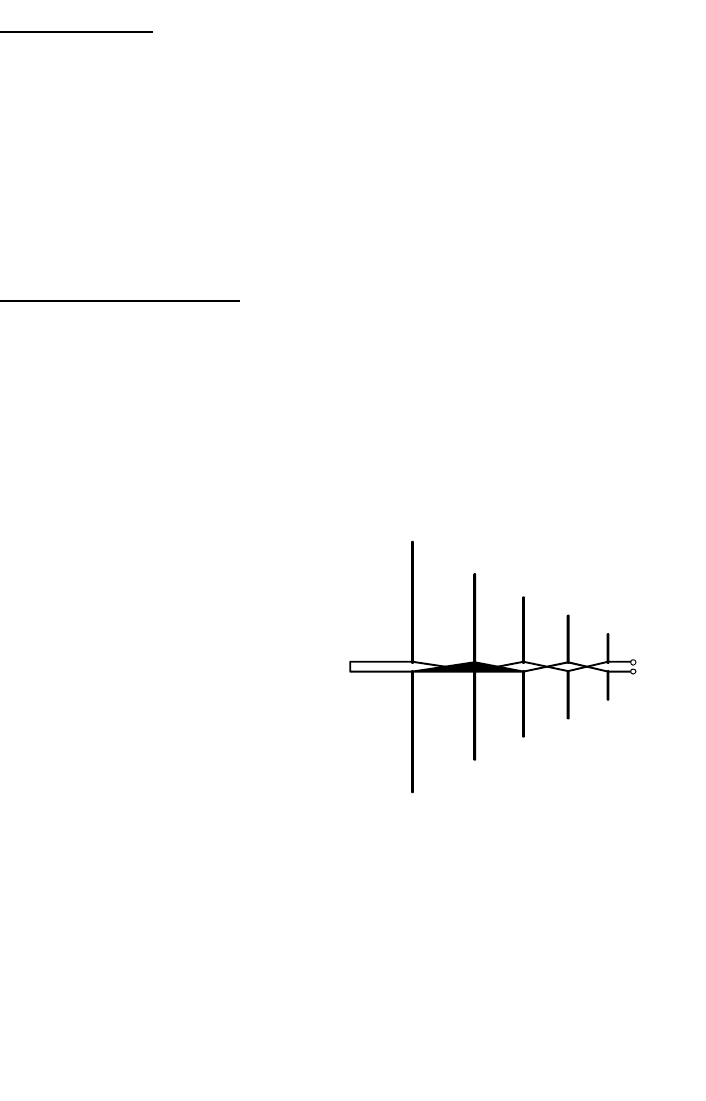
LPY2 • 4
INTRODUCTION
This small log periodic antenna, which we call the ‘Logi’, is ideal for getting the
maximum performance out of any UHF to low frequency microwave wireless
system. Its directional properties “compresses” the signal into a powerful beam
that is 4 times more powerful in the desired direction. It is the ideal antenna for
scanners, wireless LANs, and other wireless devices. Its directional properties
make it exceptionally well suited for point-to-point links! The units small size
and wide bandwidth also make it ideal for feeding reflector antennas, such as
the easily constructed corner reflector or grid that are discussed later in the
manual.
ANTENNA DESCRIPTION
To start with, what is a log periodic antenna? The seeming simplicity of the log
periodic antenna belies the remarkable features of the design. It uses a
common transmission line to alternately feed a group of 1/4 λ dipoles that are
strung together. These antennas together display excellent radiation qualities
over a wide range of frequencies as well as relatively uniform input impedances
and good VSWR characteristics. While the log periodic design has been
around since the late 1950’s it has now been discovered to be at the cutting
edge of antenna development.
Looking at the physical layout of a
log periodic antenna, one would see
that it is comprised of multiple
elements working together to provide
a wide bandwidth of usable
frequencies. The active (radiating or
receiving radiation) portion of the
antenna effectively shifts with
frequency as one stage becomes
‘more resonant’ than the next. The
lowest operating frequency is
determined by the longest element
and the highest operating frequency
is set by the shortest element. As the frequency of the transmission (or
reception) increases, the active region of the antenna shifts forward to the
shorter 1/4 λ dipole elements or vice versa as the frequency decreases.
Obviously then the ‘secret’ for proper operation must lie in the length and
spacing of the antenna elements. These and other factors must be carefully
chosen to cover the desired frequency range for the antennas’ application.
Instead of forcing you to figure out all the math and spend hours experimenting,
the creation of the Logi antenna (for frequencies between 900 and 2600 MHz)
comes to the rescue!
Feed
Point














